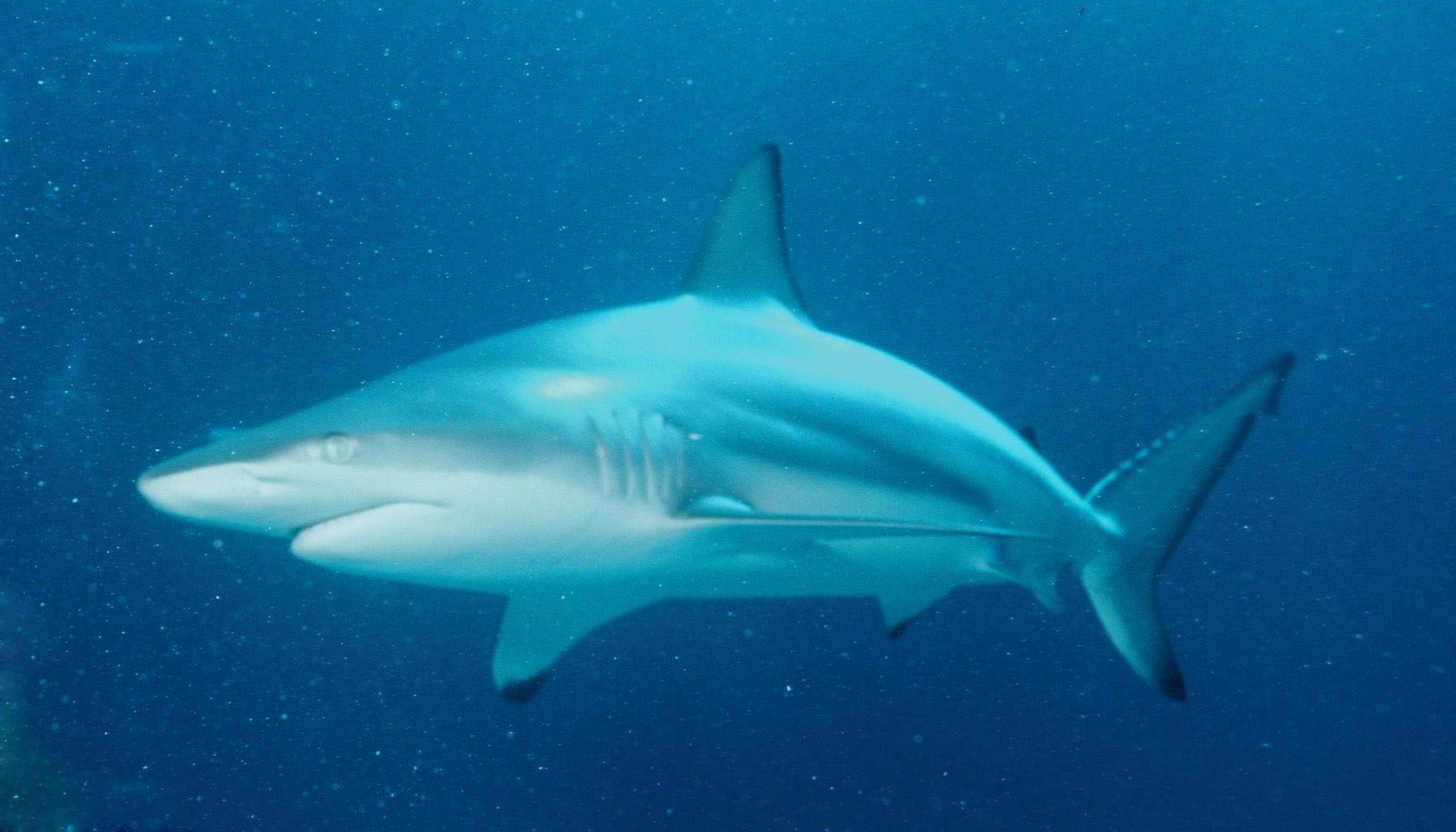Difference between revisions of "Translations:AY Honors/Species Account/Carcharhinus limbatus/1/es"
(Created page with "</noinclude> {{species id/es |common_name=Tiburón de puntas negras |latin_name=Carcharhinus limbatu |image=Carcharhinus limbatus - Caraibische zwartpunthaai.jpg |description=...") |
|||
| Line 1: | Line 1: | ||
</noinclude> | </noinclude> | ||
| − | {{species id | + | {{species id |
|common_name=Tiburón de puntas negras | |common_name=Tiburón de puntas negras | ||
|latin_name=Carcharhinus limbatu | |latin_name=Carcharhinus limbatu | ||
Revision as of 01:05, 26 February 2021
Tiburón de puntas negras (Carcharhinus limbatu)
Dónde se encuentra: El tiburón de puntas negras tiene una distribución mundial en aguas tropicales y subtropicales. En el Atlántico, se encuentra desde Massachusetts hasta Brasil, incluyendo el Golfo de México y el Mar Caribe; y desde el mar Mediterráneo, Madeira y las Islas Canarias a la República Democrática del Congo. Ocurre todo alrededor de la periferia del Océano Índico, de Sudáfrica y Madagascar para la Península Arábiga y el subcontinente indio, al sudeste de Asia. En el Pacífico occidental, se encuentra desde el sur de China hasta el norte de Australia, incluyendo las Filipinas e Indonesia. En el Pacífico oriental, se encuentra desde Baja California hasta Perú. También se ha reportado en varias islas del Pacífico, incluyendo Nueva Caledonia, Tahití, las Marquesas, Hawaii, Revillagigedo y Galápagos.
Descripción: Este tiburón presenta un cuerpo alargado no muy voluminoso, con una cabeza puntiaguda vista desde arriba. También tiene unos ojos grandes, proporcionalmente, cubiertos por párpados adiposos. La primera aleta dorsal es alta, termina en punta la segunda en posición opuesta a la anal. No tiene cresta interdorsal y sus aletas pectorales son largas, con curvatura y presentan una punta negruzca, de color más oscuro que el resto del cuerpo. Los dientes centrales de ambas mandíbulas tienen una cúspide central alta y aguda. La coloración suele ser gris oscuro o azul en la parte dorsal y blanco en la parte ventral. No suelen medir más de 1 metro y medio pero se han dado casos de ejemplares de 2 metros.

